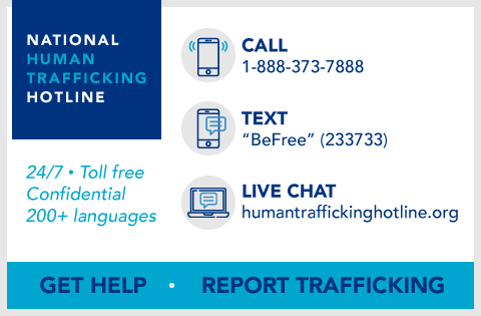ABOUT THIS GUIDE
As the long-time operators of the National Human Trafficking Hotline, Polaris knows how pervasive human trafficking is in the United States. Every year, we answer calls, texts, and chats from tens of thousands of people impacted by human trafficking. We also understand that many people, including journalists and storytellers of all kinds, want to help raise awareness about trafficking. The media and entertainment industries are powerful sources of information about human trafficking. For many people, the representations of trafficking portrayed in the news or in movies might be the only exposure they have to the topic of human trafficking.
That is why it is important that reporters, writers, and entertainment professionals are equipped to tell stories of trafficking accurately, with nuance, and in a way that portrays people with lived experience of trafficking with dignity. This guide is made to help storytellers accomplish this on any news or entertainment platform.
FAQS: HUMAN TRAFFICKING
Before you start your story on human trafficking, it is important to have an accurate understanding of human trafficking and what the Trafficking Hotline does. Here are some of our most commonly asked questions:
How is human trafficking defined?
U.S. law defines human trafficking as the use of force, fraud, or coercion to compel a person into labor, services, or commercial sex acts against their will. The one exception to this definition involves minors in commercial sex. Any situation where a minor is asked or induced to exchange sex for something of value (e.g., money, food, shelter) is human trafficking. Importantly, a person does not need to be moved across state or national borders for their situation to be defined as trafficking. Human trafficking is often confused with human smuggling, which does include the act of transport but does not include force, fraud, and coercion.
Who is vulnerable to human trafficking?
Human trafficking can happen to anyone, but some people are more vulnerable than others. Significant risk factors include recent migration or relocation, substance use, mental health concerns, involvement with the children welfare system and being a runaway or homeless youth. Often, traffickers identify and leverage peoples‘ vulnerabilities in order to create dependency.
Who are the traffickers?
Perpetrators of human trafficking span all racial, ethnic, and gender demographics and are as diverse as people who experience trafficking. Some use their privilege, wealth, and power as a means of control while others experience the same socio-economic oppression as people who experience human trafficking. They include individuals, business owners, members of a gang or network, parents or family members of people experiencing trafficking, intimate partners, owners of farms or restaurants, and powerful corporate executives and government representatives.

